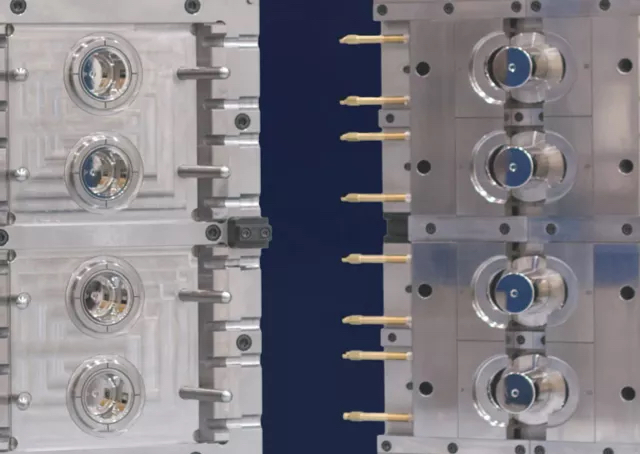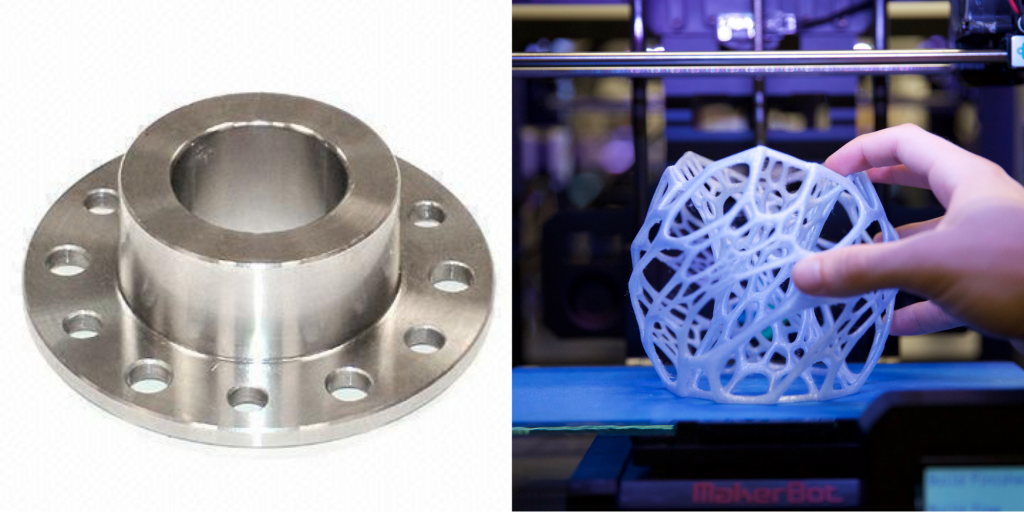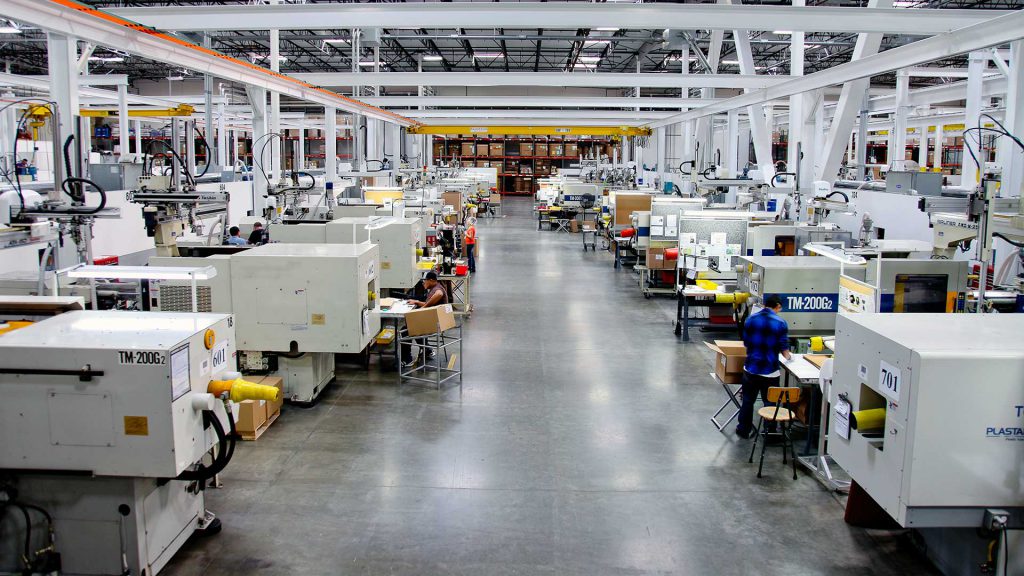
At Shapeways, we’re agnostic to technology, with a dedicated focus on quality. Our goal is to make the customer experience as seamless as possible, from design and manufacturing, to delivery of quality products–whether they may be injection molded or 3D printed. Making that choice can be difficult sometimes though as the choices in advanced materials, finishes, and techniques continue to grow.
Understanding Injection Molding
A mainstay in traditional manufacturing for nearly a century, Injection Molding was created in the mid-1800s and is one of the oldest high-volume manufacturing processes–relying on metal molds which are filled with molten liquid. Once cooled, the metal structures are ejected as solid parts. While the technique quickly evolved, Injection Molding hit its stride during the 1920s with automotive parts production and then during the 1940s as demand for economical plastic parts increased.
Manufacturers turn to Injection Molding when they need a high volume of accurate, identical parts–generally of 10,000 parts or more. Benefits include the ability to scale parts en masse, as well as keeping costs down after making all the molds. In comparison to traditional manufacturing like CNC Machining, the Injection Molding process results in less scrap and material waste. Because products are produced from one master pattern mold, every part that is produced will look the same. In a high-volume production environment that can be a major advantage, building brand consistency, quality, and product reliability.
Injection molding worldwide was estimated at USD 261.8 billion in 2021 and is anticipated to expand at a compounded annual growth rate (CAGR) of 4.8% from 2022 to 2030. According to Grand View Research, Injection Molding industry growth is set to be driven by the increasing demand for mass production of thousands of identical components at lower costs–coupled with design flexibility, and “precision from various end-user industries such as packaging, medical, and electronics.”
Shapeways offers a variety of options for mass production with Injection Molding, whether project requirements call for thermoplastics, nylon materials, or metal. Typical applications include aerospace, automotive, consumer goods, and medical.

Delving into the 3D Printing Revolution
Relatively new in comparison to Injection Molding, 3D printing offers infinite possibilities for innovation and is revolutionary. 3D printing offers myriad features rounding out the choices for manufacturers like never before.
Also referred to as additive manufacturing, the 3D printing process serves in striking contrast to traditional methods like Injection Molding. Created in the 1980s by engineer Chuck Hull, who would go on to form 3D Systems, the additive manufacturing process originated from his desire to accelerate product development. 3D printed parts can be made in a fraction of the time, allowing for rapid prototyping which was unheard of previously. Before the ability to iterate via 3D printing came along, engineers were forced to wait long periods of time–weeks or even months–before they received models back simply to begin the testing process. With the efficiency and quick turnaround time in 3D printing, anyone can now make a prototype, quickly establishing and implementing suggestions during the feedback phase.
3D printing became accessible and affordable to the mainstream public as patents obtained in the 1980s expired around 2014. The ramifications for manufacturing were obvious with expanded design freedom, rapid prototyping, and the ability to manufacture complex geometries. Now, the worldwide 3D printing industry is projected to grow from $18.33 billion in 2022 to $83.90 billion by 2029, at a CAGR of 24.3% in the forecast period from 2022 to 2029.
3D printing materials like metal continue to trend upward and are projected to expand at a compound annual growth rate (CAGR) of 23.9% from 2022 to 2030. Metal 3D printing is one such market that has benefited significantly from the growing necessity of rapid prototyping and advanced manufacturing practices. Not only is a rise expected, according to companies like Grand View Research, but the ‘industry is poised to witness unprecedented growth.’ Unsurprisingly, the reason cited is continued growth in innovation.
Specific verticals like aerospace 3D printing are also expected to grow from USD 2.75 billion in 2022 to USD 8.39 billion by 2027, at a CAGR of 25%–while automotive 3D printing is projected to grow from USD 2.9 billion in 2022 to USD 7.9 billion by 2027, at a CAGR of 21.7%.

Making the Choice: Parts and Production Requirements
Aside from unit cost and order volume, additional considerations come into play when choosing between Injection Molding and 3D printing:
- Complexity of End-Use Parts – Whether an object has rounded or ultra-sharp edges, overall structure and complexity of geometry can help decide which manufacturing method is best. When thinking of ‘creative’ or organic shapes as complex, 3D printing wins. When considering tight engineering constraints and tolerances, injection molding is usually the best choice for manufacturing.
- Production Time – Production time is determined by the size of the production run, manufacturing capacity, and necessary turnaround times. The steps influencing production timelines include: sourcing a manufacturer, making molds, monitoring quality control, shipping and delivery.
- Iteration & Change – As with all competitive products and services, the ability to iterate during development and maintain agility is key. For businesses at the beginning of product development, spending copious amounts of capital on a mold that cannot be changed will slow the innovation cycle. If the focus is on intense mass production without worry for customization, then injection molding will prove more fitting over 3D printing.
When Injection Molding and 3D Printing Intersect–and When They Diverge
Shapeways customers continue to enjoy numerous 3D printing materials, along with diverse technologies. Drone technology customers Quantum-Systems and Kespry save thousands by prototyping with Shapeways, and using the same 3D printing materials for end-use manufacturing.
Customers like 67 Designs have partnered with Shapeways over the years and are deeply committed to the value of 3D printing. Designing and manufacturing luxury accessories for vehicles like offroading SUVs, 67 Designs has prototyped and 3D printed their parts with Nylon 12 [Versatile Plastic] and Selective Laser Sintering (SLS) technology. For 67 Designs, a serious belief in and dedication to 3D printing technology meant sticking with use of the technology despite more conventional ideology which could have pointed toward a return to traditional manufacturing like Injection Molding.
About Shapeways
Enjoy the benefits of this advanced technology and a wide range of materials from Shapeways for 3D printing your creations with accuracy, complex detail, and no minimum or limits in terms of mass customization or single part orders. Shapeways has worked with over 1 million customers in 160 countries to 3D print over 21 million parts! Read about case studies, find out more about Shapeways additive manufacturing solutions, and get instant quotes here.

